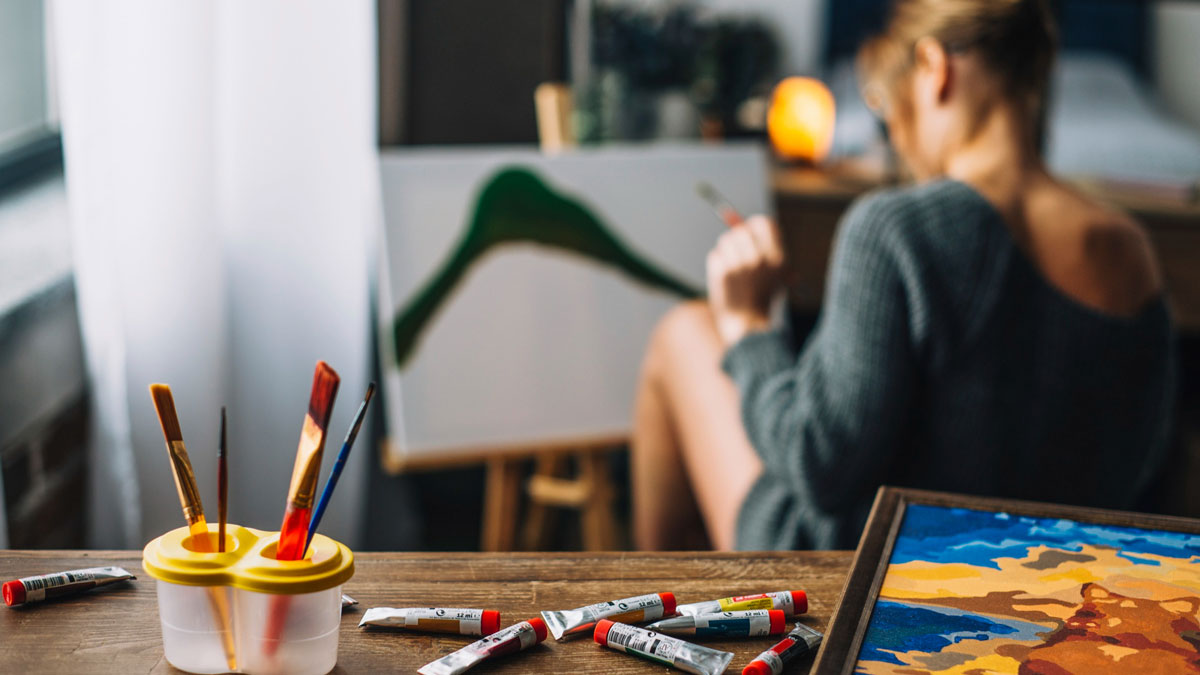In today’s fast-paced world, stress, anxiety, and mental health challenges are becoming increasingly prevalent. While traditional therapies and medications remain essential tools for mental health management, there is growing recognition of the power of creativity in healing the mind. Art therapy, a blend of art and psychology, offers a unique avenue for self-expression, emotional release, and mental well-being.
Whether you’re painting on a canvas, molding clay, or simply doodling, the act of creating art can be profoundly therapeutic. Here’s how art therapy can help heal the mind and bring balance to our lives.
What is Art Therapy?
Art therapy is a form of expressive therapy that uses creative activities to improve mental, emotional, and psychological well-being. It is facilitated by trained professionals who guide individuals through artistic processes to explore their emotions, reduce stress, and address personal challenges.
Unlike traditional art classes, art therapy is not about creating a masterpiece. Instead, the focus is on the process of creation and the emotions it evokes. It allows individuals to communicate feelings that might be difficult to put into words, fostering self-discovery and healing.
The Science Behind Art Therapy
Art therapy’s impact on the mind is backed by research. Studies show that engaging in creative activities stimulates the brain’s reward system, releasing dopamine, a neurotransmitter that promotes feelings of happiness and reduces stress.
Additionally, art engages both hemispheres of the brain. While the right hemisphere is associated with creativity and intuition, the left hemisphere is responsible for logic and analysis. Art therapy helps create a balance between these two sides, fostering a state of mental harmony.
Benefits of Art Therapy
1. Stress Reduction
Art therapy provides a safe space to release pent-up emotions. Whether through aggressive brushstrokes or intricate coloring, the act of creating art can be a powerful outlet for stress and tension.
2. Improved Emotional Expression
For those who struggle to articulate their feelings, art offers an alternative form of communication. A painting or sculpture can often convey emotions more effectively than words, helping individuals process complex experiences.
3. Enhanced Self-Awareness
Art therapy encourages introspection. As individuals create, they may uncover subconscious thoughts and patterns, gaining insights into their inner world and developing a deeper understanding of themselves.
4. Boosted Confidence and Self-Esteem
Completing an artwork, regardless of its aesthetic value, can instill a sense of accomplishment. This boosts self-esteem and reinforces the belief in one’s ability to overcome challenges.
5. Healing Trauma
Art therapy is particularly effective in helping individuals cope with trauma. Creating art can provide a sense of control and empowerment, allowing individuals to process traumatic experiences in a non-threatening way.
Who Can Benefit from Art Therapy?
Art therapy is versatile and can benefit people of all ages and backgrounds. It is commonly used to address:
- Anxiety and Depression: Creating art can elevate mood and provide a sense of purpose.
- Trauma and PTSD: Veterans, abuse survivors, and those with post-traumatic stress can find solace in artistic expression.
- Chronic Illness: Patients dealing with long-term illnesses often use art therapy to manage pain and cope with emotional struggles.
- Children and Adolescents: For young individuals, art therapy is an effective way to express feelings and navigate developmental challenges.
- Neurodivergence: Art therapy can be beneficial for those with autism, ADHD, or other neurodivergent conditions, providing a structured yet flexible outlet for self-expression.
How to Get Started with Art Therapy
1. Seek Professional Guidance
A licensed art therapist can help tailor the experience to your unique needs. They provide structure, techniques, and feedback to ensure the sessions are effective.
2. Create a Safe Space
If you’re experimenting with art therapy on your own, set up a quiet, comfortable area where you can work without distractions.
3. Choose Your Medium
From painting and drawing to sculpting and collaging, the possibilities are endless. Choose a medium that feels natural and enjoyable for you.
4. Focus on the Process, Not the Outcome
Remember, it’s not about creating a perfect piece of art. Let go of self-judgment and focus on the act of creation.
5. Reflect on Your Work
After completing an artwork, take a moment to reflect on it. What emotions did you experience while creating it? What does the final piece represent to you?
Incorporating Creativity into Daily Life
You don’t need to attend formal art therapy sessions to reap the benefits of creativity. Here are some simple ways to incorporate artistic expression into your daily routine:
- Start a Journal: Combine writing with sketching or doodling.
- Try Adult Coloring Books: These are excellent for stress relief and relaxation.
- Join a Class: Participate in local workshops or online art courses to explore different techniques.
- Create Collages: Use magazines, photographs, and other materials to craft a visual representation of your thoughts.
- Paint Freely: Set aside time each week to paint without a specific goal in mind.
Conclusion
Art therapy is a powerful tool for mental well-being, offering a pathway to emotional healing and self-discovery. By tapping into the therapeutic potential of creativity, individuals can find relief from stress, build resilience, and foster a deeper connection with themselves.
Whether through formal sessions or personal exploration, embracing art as a form of therapy is an invitation to heal, grow, and thrive in a chaotic world. So pick up a brush, a pencil, or even a handful of clay—your mind will thank you for it.





